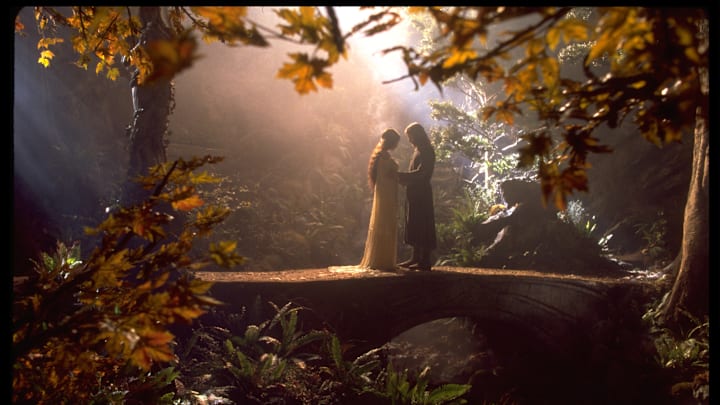J.R.R. Tolkien was an English author and philologist who created a story intended only for his children as an interesting and exciting bedtime story. When a colleague discovered the story, Tolkien was encouraged to submit it for publication. To his surprise, The Hobbit was enjoyed by children and adults alike, prompting him to pen a sequel that would become his best-known work: The Lord of the Rings.
While most Tolkien fans are familiar with The Hobbit, its three-part sequel The Lord of the Rings, and even the sprawling prequel book The Silmarillion, it is not commonly known that several other detailed publications greatly expand upon the universe. Many of these books were published posthumously by Tolkien's son, Christopher Tolkien, who relied on his father's notes to and drafts.
Many people educated in the world of Tolkien suggest reading the books in the order of publication, as each one becomes more complex. But if you want to read them in canon order — that is, starting with the earliest point in Tolkien's invented history and moving towards the end — things get complicated. Reading everything chronologically would require flipping between books and reading chapters from several simultaneously. Many books tell the same story from a different perspective, complicating the precise order in which events unfold.
Below, we're tried to put together a guide for how to read Tolkien's Middle-earth saga in chronological canon order. Chronology.org has complex details of how to read Tolkien's stories in chronological order. The Tolkien Society recommends reading in publication order but adds, "They should be read in any order the reader chooses, but most of all, they should be enjoyed."
Reading J.R.R. Tolkien's Middle-earth books in chronological canon order
The Silmarillion (1977) is a collection of Tolkien's mythological tales of the beginning of Middle-earth, including the stories of the High Elves and the First Ages, which he worked on for over 50 years. This collection was compiled by his son and literary executor, Christopher Tolkien.
The Children Of Húrin (2007) is a single expanded story taken from the Silmarillion that introduces the lands of Beleriand in the First Age. It mostly follows Túrin Turambar, a mortal man who fought against Morgoth, the Dark Lord of Middle-earth during the First Age.
Beren & Lúthien (2017) is a history in sequence standalone story taken from Tolkien's manuscripts. It's about the first union between elves and men, as the elven woman Lúthien and the mortal man Beren fall in love.
The Fall Of Gondolin (2018) is variant version of this tale in a history of sequence mode. It's about the conquest of the hidden Elven city of Gondolin, which fell to Morgoth's forces during the Second Age.
The Fall of Númenor (2022) is a compilation by Brian Sibley of all the Second Age published texts, with a unifying commentary. Númenor was an island nation that lay off the coast of Middle-earth during the Second Age. Its fall it one of the main stories that defines this stretch of Tolkien's history. We'll see some of these events play out in the Prime Video show The Rings of Power.
The Hobbit: or There and Back Again (1937): The tale that began as a bedtime story for Tolkien's children introduces Bilbo Baggins as he embarks on an adventure with the dwarves to reclaim the Lonely Mountain from the dragon Smaug. This is the first of several books set during the Third Age of Middle-earth.
The Lord of the Rings: Fellowship of the Ring (1954) is one of the world's most famous books. It tells of Frodo's journey with the One Ring his uncle Bilbo found in The Hobbit.
The Lord of the Rings: The Two Towers (1954) continues the stories of Frodo and his former companions who embark on separate journeys.
The Lord of the Rings: The Return of the King (1955) concludes Frodo's story and those of his companions.
Unfinished Tales of Númenor & Middle Earth (1980) adds background to parts of The Lord of the Rings and The Silmarillion, compiled from Tolkien's notes on the First, Second, and Third Ages.
History of Middle Earth (1983-1996) is a 12-volume history of Middle-earth put together by Christopher Tolkien.
Nature of Middle Earth (2021) is Tolkien's final writings on Middle-earth brought together in a collection that covers the vast topic of the world and the people living there.
To stay up to date on everything fantasy, science fiction, and WiC, follow our all-encompassing Facebook page and Twitter account, sign up for our exclusive newsletter and check out our YouTube channel.
